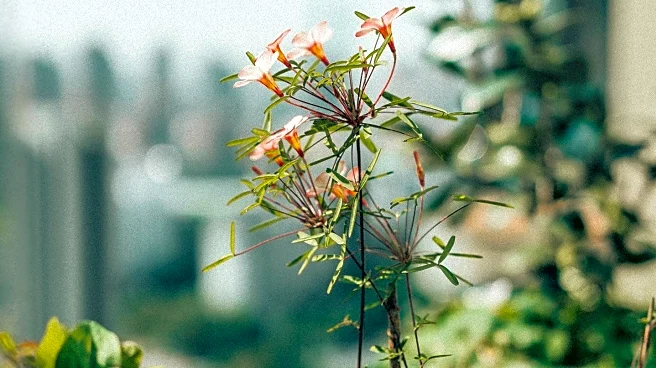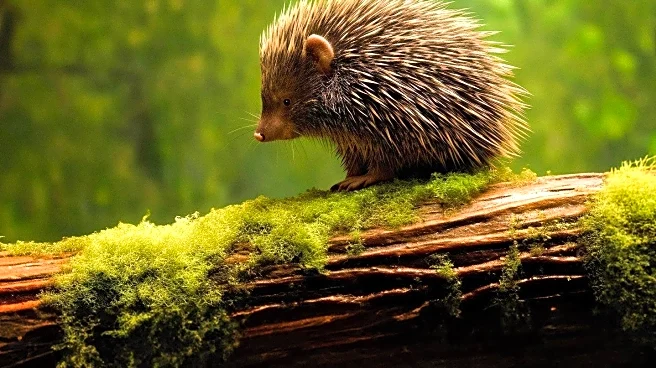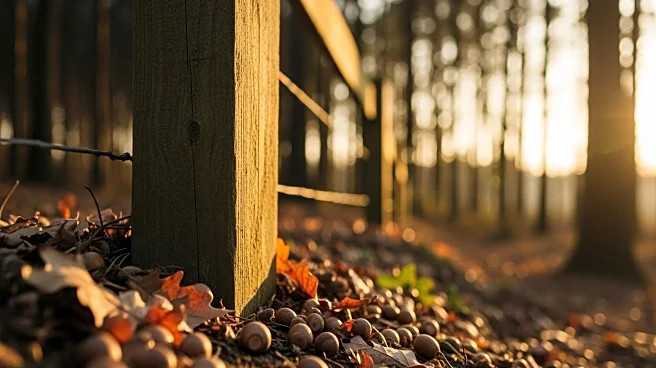What's Happening?
Urban gardening is gaining attention as a method to support wildlife conservation in city environments. Techniques such as creating gaps in garden fences are being encouraged to help hedgehogs, a species whose population is declining in the UK. Experts
suggest that these 'Hedgehog Highways' allow the animals to roam freely in search of food and mates. Additionally, urban gardeners are advised to grow wild patches, build hedgehog houses, and avoid using pesticides to create a more hospitable environment for these creatures. The initiative is part of a broader effort to integrate wildlife-friendly practices into urban gardening, thereby supporting biodiversity in densely populated areas.
Why It's Important?
The push for urban gardening techniques that support wildlife conservation highlights the growing recognition of urban areas as potential habitats for declining species. By adopting these practices, city dwellers can contribute to biodiversity and ecological balance. This approach not only benefits wildlife but also enhances urban green spaces, making them more vibrant and sustainable. The initiative could lead to increased awareness and participation in conservation efforts, potentially influencing public policy and urban planning to incorporate more wildlife-friendly designs. As urbanization continues to expand, such practices become crucial in mitigating the impact on local ecosystems.
What's Next?
As awareness of urban gardening's role in wildlife conservation grows, it is likely that more city residents will adopt these practices. This could lead to a network of connected gardens that support various species, not just hedgehogs. Environmental organizations and local governments may also play a role in promoting these initiatives through educational campaigns and incentives. The success of these efforts could inspire similar projects in other urban areas, potentially leading to a broader movement towards sustainable urban living. Monitoring the impact on local wildlife populations will be essential to assess the effectiveness of these practices.
Beyond the Headlines
The integration of wildlife-friendly practices in urban gardening raises important ethical and cultural questions about human responsibility towards nature. It challenges the traditional view of cities as separate from natural ecosystems and encourages a more harmonious coexistence. This shift could influence cultural attitudes towards urban living, promoting a greater appreciation for nature and its role in human well-being. Additionally, it highlights the potential for urban spaces to contribute positively to global biodiversity goals, setting a precedent for other cities worldwide.














